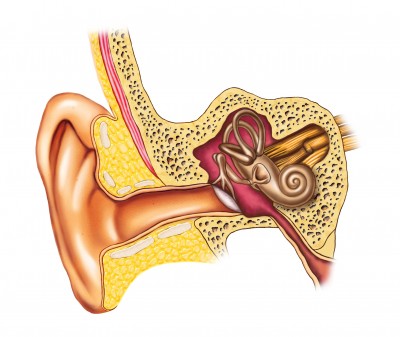 Our body’s vestibular system acts to maintain our balance and sense of equilibrium. When this system is not functioning normally, it can make anyone feel like they’re on a ride, and I’m talking the not-so-merry-go-round. The anatomy and physiology of the vestibular system is complex, comprised of the inner ear, nerves, the cerebellum, regions of the brain stem and brain, our eyes, and muscles throughout our body. This post will be about the anatomy and function of the inner ear, or the peripheral vestibular system.
Our body’s vestibular system acts to maintain our balance and sense of equilibrium. When this system is not functioning normally, it can make anyone feel like they’re on a ride, and I’m talking the not-so-merry-go-round. The anatomy and physiology of the vestibular system is complex, comprised of the inner ear, nerves, the cerebellum, regions of the brain stem and brain, our eyes, and muscles throughout our body. This post will be about the anatomy and function of the inner ear, or the peripheral vestibular system.
The inner ear is composed of the semicircular canals, the utricle and the saccule, cochlea, and the vestibulocochlear nerve. There are three semicircular canals, which function to relay information to the brain and cerebellum about the speed of head movements. The semicircular canals are filled with fluid, called endolymph. When the head turns, endolymph flows, which causes tiny hairs in the canal to bend in different directions. The direction in which the hairs bend, determines how the vestibular nerve is stimulated and consequently what message is sent to the brain about how the head is turning. The brain uses this information to help coordinate the movement of your eyes and head. If this is not functioning properly, you can develop Cookie Monster googly eyes, or vertigo, and the eyes will not be able to appropriately move with the head.
The utricle and saccule, like the semicircular canals, sense where the head is in space. They also orient us in relation to gravity. The saccule senses vertical movement of the head, as in bouncing. The utricle senses tilting of the head side to side and forwards and backwards.
The vestibulocochlear nerve, the 8th cranial nerve, relays information from the inner ear about our body’s position in space to the brain for interpretation and  action. It takes all information about our head’s position and movement and hearing to the brain and its related structures for interpretation and action. It helps keep our eyes stabilized and moving in a coordinated manner while our head moves.
action. It takes all information about our head’s position and movement and hearing to the brain and its related structures for interpretation and action. It helps keep our eyes stabilized and moving in a coordinated manner while our head moves.
The coolest thing about our inner ear is that we have two and they both report back to the nerve about the same head movement. This is called redundancy and another method in which our nervous system is flexible and adaptable. So, if one is late to work or out sick, the other one is there to pick up the slack, and we can maintain our sense of equilibrium.










February 11, 2010
Vestibular